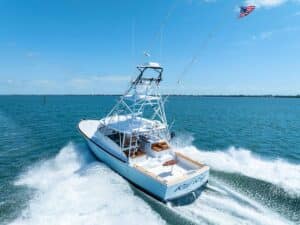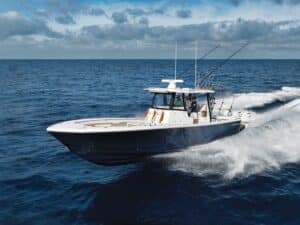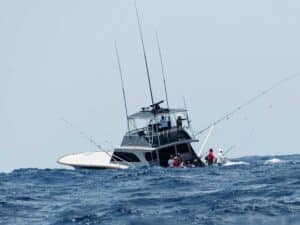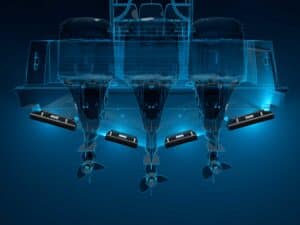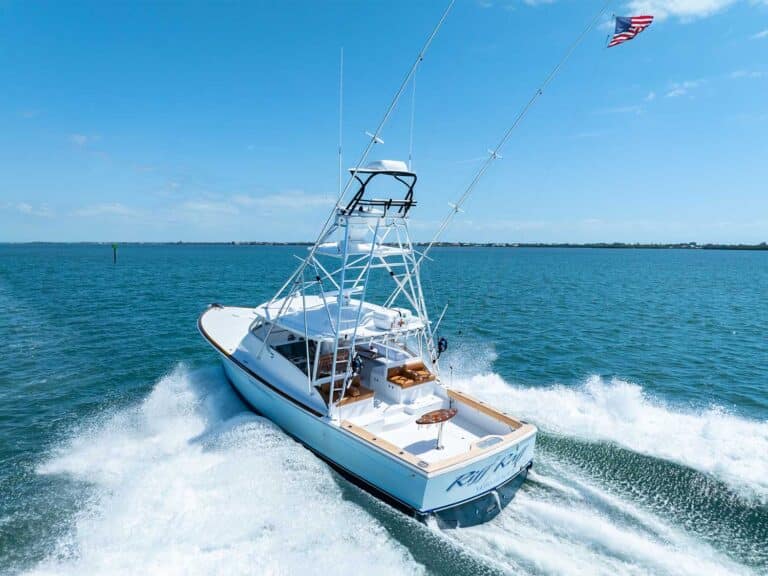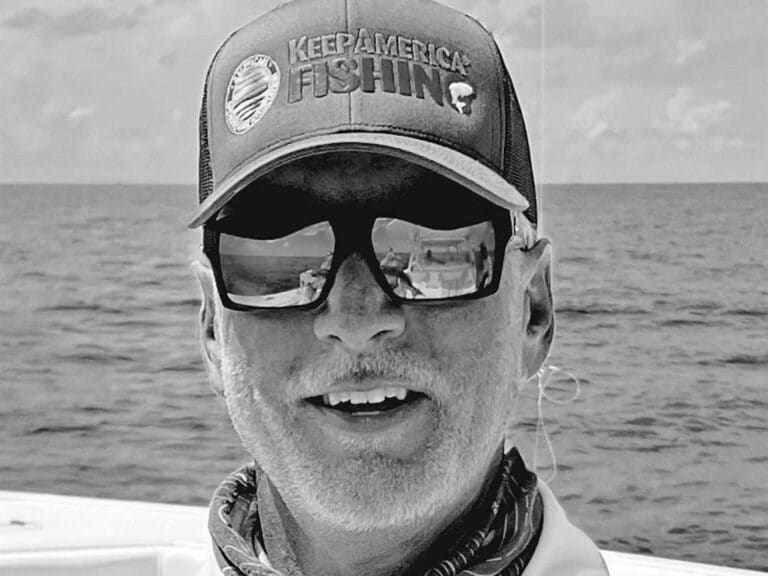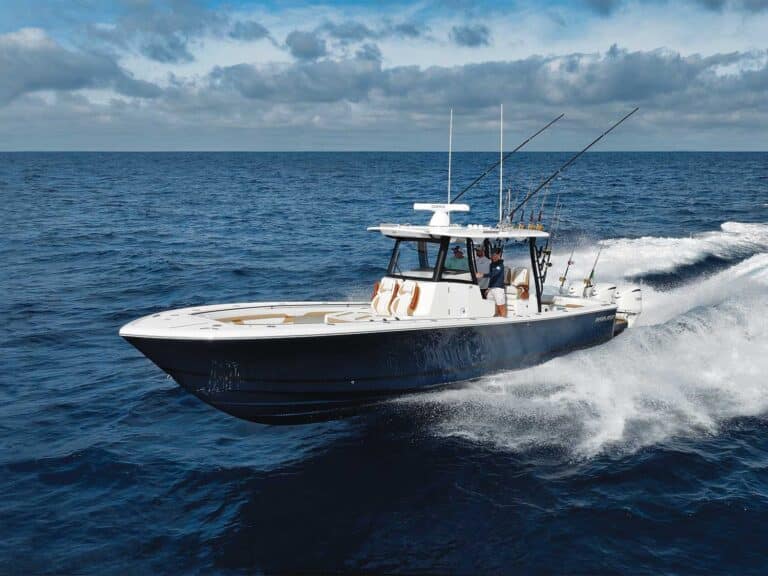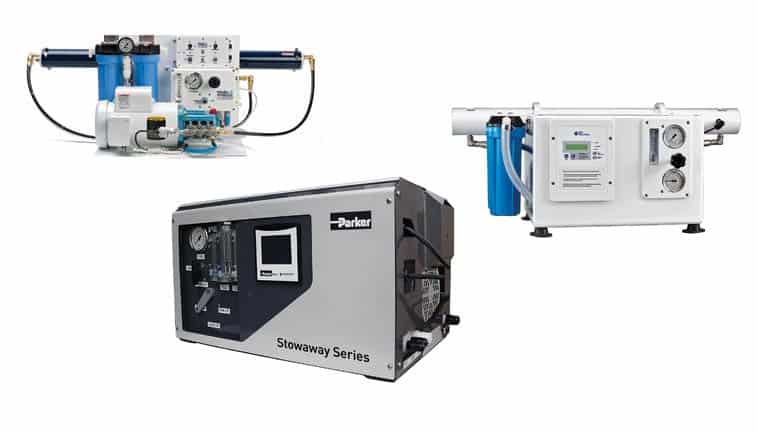
watermakers
There’s no question that watermakers have earned their place on board sport-fishing boats. These incredibly valuable tools have become so handy and user-friendly that they are almost required equipment, especially if you’re taking your boat abroad. Back in the day, I would have said that a watermaker was a wish-list piece of gear, but today I feel much differently about their importance on the boat and the benefits they offer.
The days of using a watermaker strictly for filling the tank are long gone. Although keeping the water tank full is still their main task, there are many benefits of having a watermaker on board. Besides their main function of providing a safe water supply for drinking and ice-making, they also offer far better water for washing the boat than any marina could offer. The high-quality water is easy on painted and gelcoated surfaces and doesn’t leave spots like most dockside water.
With the large size of today’s boats, crews are getting a jump on the end-of-day cleaning and washing down while idling to the slip. This does a couple of things; first, it keeps you from getting your neighbor at the marina wet when you pull in; second, it allows the crew to complete the day earlier and attend to other duties; and lastly, when traveling, it saves you from having another bill at the marina for water consumption. And not using the marina water keeps contaminants, such as salts, minerals and viruses, out of your tank.
When looking into what type of unit best suits your needs, you first need to determine the right capacity for your water use. Next, you must consider the installation of the unit as per the manufacturer’s requirements, since there are specifications that you must follow for heat as well as space. The good news is that most boatbuilders engineer watermakers right into the boat, providing contingencies for plumbing, electrical and service.
The beauty of today’s watermaking products is that many of them come in various capacities, sizes and electrical configurations. I would not hesitate to put a 12- or 24-volt unit on a smaller 30- to 40-foot sport-fisher that’s not equipped with a generator. Clearly, if there is a generator installed, you would choose a higher-capacity 120- or 240-volt unit that could produce enough water to fill your tank and maintain your requirements for ice-making, boat washdown, galley use
and showering.
It’s important to have the unit where it can be serviced and maintained with relative ease. This applies not only to the user interface, but to the seawater pump, pre-filters, high-pressure pump and membranes. Most manufacturers build modular units so that components can be placed for good service, regular flushing and maintenance. Having the ability to easily change pre-filters and flush the unit after use helps extend the life of the machine and keeps the users in touch with the equipment for frequent care.
Sea Recovery
Currently, Sea Recovery is the only manufacturer offering NMEA 2000-compliant watermaking products, including their Aquamatic and Aqua Whisper DX product lines. These units fit a wide variety of applications, as they are available from 450- to 1,800-gallon-per-day units. They are also available as modular units to ideally place components or as rack-mounted compact units. These units also feature automated pressure-regulating systems and automatic freshwater flush.
I really like the idea of remotely controlling and monitoring the system for several reasons. First, because you were busy finding fish all day, you may have forgotten to run the watermaker and have come up short of water for your daily activities, which is problematic in that we either have to add water from the dock or make water in the slip if we are in a place with good seawater. It’s not so bad, but it sure is easier and more guest-friendly to make water during the day while fishing. Second, starting the unit and bringing it up to pressure typically requires sending a crewman into the engine room or pump room — not always a totally safe or easy thing to do, especially in foul weather.
Village Marine Tech
The folks at Parker that bring us Racor fuel filtration also bring us Village Marine Tech watermaking filtration. Their Stowaway, LT and Sea Quencher Series offer size and capacity options to fit the needs of almost any application. Racor VMT also offers several standard or optional controlling features, depending on the series, including color touch-screen controllers and timed automatic flush with adjustable interval and duration settings.
There’s no question that desalination for recreational marine use has come a long way in the last 20 years, and there’s a sea of possibilities to fit your requirements and your budget. To have a desalination unit on board today gives you an incredible amount of freedom when traveling, helps to maintain the finish on your boat by not exposing it to sometimes harsh dock water, and keeps your tank free from contaminants.
Watermakers Inc.
Watermakers Inc. has been providing solutions for the marine industry for more than 30 years. From smaller recreational marine applications to high-capacity, high-volume emergency management and industrial units, they’ve developed solutions to bring fresh water where it’s needed. Their Islander Series features units that produce from 200 to 700 gallons per day, and they’re compact and designed for smaller boats. They also offer optional controls, including an auto diverter valve to automatically move product to the water tank based on the salinity reading. These units can also be fitted with an unattended rinse package that can be set to automatically rinse the unit every seven days when you are away or not planning on using the unit for a time.
The WMS and WMSQ units are higher output, ranging from 550 gpd to 2,200 gpd for the WMS and 550 gpd to 4,000 gpd for the WMSQ units. These come mounted in a frame-mounted unit or as modular units. Watermakers Inc. builds these units for maximum durability and also offers a host of optional controlling capability, including unattended rinse, auto start/stop/rinse with manual override, and remote operation with controls for the bridge or other convenient place on board.
Mobile Control: Maretron N2KView
There have been some really neat techno-logical advances with the advent of the NMEA 2000 BUS as it relates to the control and use of watermakers. In particular, Maretron, a leader in vessel monitoring and control systems, has developed their N2KView app for the iPhone, iPad, Android phone or other tablet product; it allows owners and crew to monitor or control all types of vessel data. The N2KView offers views of everything from main engines to generators and lets you control and monitor onboard alarms, Dometic air-conditioning products, Eskimo ice makers and watermakers. With their IPG 100 gateway, Maretron allows access to and control of the onboard watermaker using wireless Internet, either while aboard the boat or from the dock, home or office. Wherever you can get Internet, whether via Ethernet, Wi-Fi or 4G networks, the N2KView app allows you to completely control the unit. www.maretron.com
